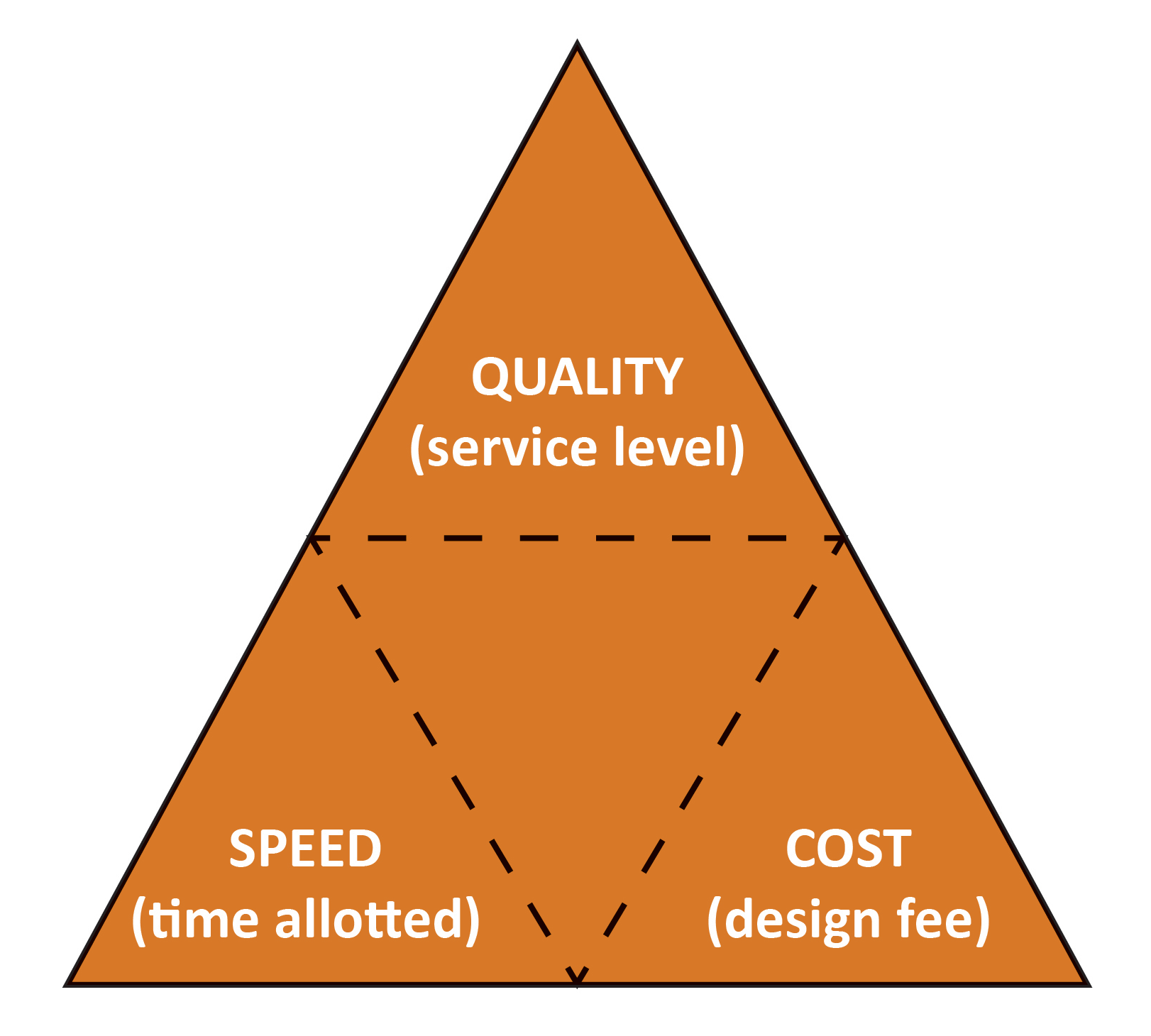Assist you in selecting which Design Professional (DP) service is right for you.
Let’s say you want to have a sunroom or deck put on your house. Would you ask a contractor for a proposal without plans, which provide information such as size, materials, budget, and aesthetics?
Of course not! Most of the time you have a Design Professional (DP) create a set of drawings and specs, sometimes called “The Scope of Work,” (SOW), or “Bid Documents.” Obviously, the amount information varies depending on the project complexity. An SOW for a residential deck may be a page or two. A complex project, such as a medical facility, needs hundreds of pages. A completed SOW is incredibly detailed and includes everything the contractor needs to price and construct the building.
Owners understand how to hire a contractor. Traditionally:
The DP gives the bid documents to the owner once the DP receives the necessary governmental approvals.
The owner invites contractors to bid on this SOW.
The contractors have a few weeks to contact suppliers and subcontractor for pricing.
The owner team can review the contractor(s) qualifications and price to make an informed decision.
Compare this to the DP selection and hiring process. The owner:
Has a desired schedule, budget, and program.
Provides basic information to the DP and requests a fee proposal.
However, the quantity of information that owner gives the DP is minimal, compared to the information the contractor receives to assemble their price. Owners are not designers that understand the building codes, nor do they know all the regulatory approvals needed.
If you are thinking, “Doesn’t the DP know what I want or need and
include it in their proposal? Isn’t that why I hired them?”
This is a reasonable, but inaccurate assumption.
You may have heard of the “project triangle.” It translates across all parts of a project, in this case the Design Professional Services. Its three pieces represent:
Cost – which is the design fee, usually associated with the number of hours the DP believes they need to complete the drawings.
Speed – which the time allotted to produce the drawings.
Quality – which is level of service provided by the Design Professional.
The industry saying goes “you can pick two, but the third is affected. Most owners push for lower “Cost” and faster “Speed” from the DP. Therefore, the DP needs to reduce the “Quality.”
Typically, the Owner:
Desires a low fixed design fee.
Wants the drawings quickly.
May not know all the necessary services needed to complete the drawings.
Believes the design and drawings process is simpler than it is.
Because of this, the owner may, unknowingly, provide an inadequate SOW to the DP when requesting design services.
Here is the issue. The DP:
Knows what service are really needed to complete the project but is reluctant to include them in their quote.
Will tell you what you want to hear so they get your business.
Create a proposal with what seems like an endless list of disclaimers or non-included services.
Agrees to an unrealistic schedule.
Will keep their scope of services vague, allowing them to ask for more money if you deviate even the slightest.
The DP knows what services the owner will eventually require for a complete project. However, to be competitive, the DP only quotes what the owner asked for. If they do not, the owner will have sticker shock, which usually results with the owner finding a competitor that gives them a quote on what the owner believes needed.
Hiring an Owners Rep is the solution.
Engage the OR, (with design experience), before you hire your DP so the owner and OR work together to create a thorough SOW or a Design “Request for Proposal/Pricing,” (RFP).
As presented in earlier articles, the OR gathers information during the due diligence phase and up-front feasibility study.
This information when paired with preliminary plans, budget, scope, timeline, an understanding of the regulatory process, and all other pertinent information, becomes the basis for the Design RFP.
A level playing field is created by having the OR compile all this information into the RFP.
Like the contractors, all the “invited and qualified” design professionals are providing a proposal for the same work scope, as opposed to what they believe will get them the job.
The Design Professional should have minimal exceptions in their RFP, since the owner provided a detailed SOW. This allows an owner an “apples to apples” review of all proposals and then make an informed decision on whom to hire as their Design Professional.



